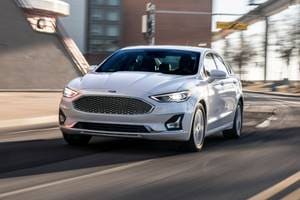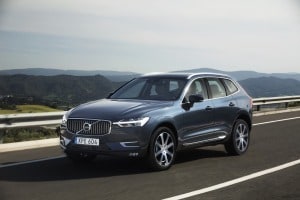A December to Remember?
Car sales demonstrated growing momentum during the last few months, with sales exceeding a seasonally adjusted annual rate (SAAR) of 13 million. November sales showed particular strength with a SAAR of 13.6 million. Does this mean 2011 will close out on a high note for the auto industry? Edmunds.com expects it will. Here are 5 key signs that point to promising sales results for December:
1. Selection, selection, selection. After months of constrained supply, inventories are finally growing again. The number of vehicles delivered to dealers has averaged 115 percent of 2010 levels for the industry as a whole since August. Toyota, which struggled to meet last year's delivery levels in the months following March's devastating earthquake, surpassed its 2010 average in both October and November. Honda also beat its 2010 average for a couple of months before deliveries fell in November due to production shutdowns from the Thai floods. But, despite Honda's speed bump, for the industry's inventory level at the start of December is the highest in eight months, meaning an ample selection to attract buyers. In addition, new top-selling models, such as the all-new 2012 Toyota Camry (introduced in September) and the all-new 2012 Honda CR-V (debuting in mid-December), will provide further impetus for would-be buyers.
2. If you build it, they will come. A key force behind recent auto sales momentum has been a revitalized supply that is enticing buyers who delayed purchases this summer due to supply shortages and higher prices. Edmunds.com estimates that consumers deferred nearly 300,000 sales from May to August, and that only about 100,000 "lost" sales have been recovered to date. As a result, a sizable pool of buyers exists beyond base demand. Edmunds.com estimates that at least another 100,000 sales will return to market in the next few months, fueling the current auto sales "mini-bubble" through December and into 2012.

3. The "Buy" Message is out. With their dealers newly restocked, automakers are now sending consumers a signal to buy. Advertising about end-of-the-year car sales events began even earlier this year — around mid-November — as the auto industry joined a flood of messaging from the rest of the retail market regarding a wide array of sales, ranging from Thanksgiving sales, to Black Friday sales, to traditional holiday sales.
4. Return of the Deal Seekers. After years of posting average (or worse) sales results, December vaulted to the top of the pack post-recession, ranking first or second for monthly sales in 2009 and 2010. Since the start of the recession, consumers have become much more attuned to seeking better deals, and that's helped to shape sales messaging for retailers during the holiday shopping season. So far, various signs point to a similar inclination to shop this December. Retail spending in November rose 0.2 percent month over month, following healthy gains of 1.3 percent in September and 0.6 percent in October. During the four-day Thanksgiving weekend alone, spending totaled $52.4 billion, up 16 percent over last year. Recent reports of declining personal savings rates further indicate that consumers are motivated to spend. And, for cars in particular, Edmunds.com finds that monthly website traffic since August has averaged 11 percent higher than the average monthly traffic from January to July.

5. Light at the end of the economic tunnel. Recent economic data also support strong auto sales for December. Inflation has moderated, and in particular, gas prices fell in November to their lowest levels since February. The labor recovery appears to be gaining some traction as well, with 140,000 non-farm jobs added on average in each of the past three months and particular strength in the private sector. And, after falling to recession-level lows in August, consumer confidence finally rose in November, with the index jumping to 56.0 from 40.9 in October. While a reading of 56.0 does not usually indicate economic strength, the fact that consumer confidence is increasing — and at such a rapid rate — bodes well for continued spending on new vehicles in the near-term.
Lacey Plache is the Chief Economist for Edmunds.com. Follow @AutoEconomist on Twitter.





